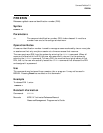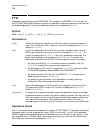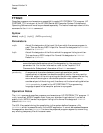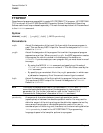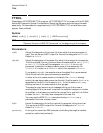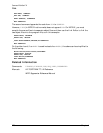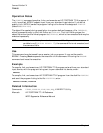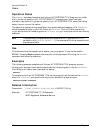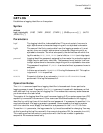
Chapter 4 269
Command Definition F-K
FTNXL
The info string used in the HP FORTRAN 77/iX programming language to
pass initial compiler options to the HP FORTRAN 77/iX compiler. HP
FORTRAN 77/iX places a single dollar sign ($) before the info string and
places the string before the first line of source code in the text file.
NOTE The formal file designators used in this command (FTNTEXT, FTNOBJ, and
FTNLIST) cannot be backreferenced as actual file designators in the
command parameter list. For further information, refer to the "Implicit FILE
Commands for Subsystems" discussion of the FILE command.
Operation Notes
The FTNXL command compiles an HP FORTRAN 77/iX program and stores the object code
in a source file on disk. If textfile is not specified, MPE/iX expects the source program to be
entered from your standard input ($STDIN). If you do not specify listfile, MPE/iX sends the
listing to your standard list device ($STDLIST) and identifies it by the formal file
designator, FTNLIST. If you omit the objectfile parameter, the object code is saved in the file
domain as $OLDPASS. To keep it as a permanent file, you save $OLDPASS under another
name.
NOTE This command is implemented as a command file. If you set the HPPATH
variable to null (SETVAR HPPATH ""), the command file is not executed, and
the command fails.
Use
This command may be issued from a session, job, or program. It may not be used in
BREAK. Pressing
Break suspends the execution of this command. Entering the RESUME
command continues the execution.
Examples
The following example compiles an HP FORTRAN 77/iX program entered from your
standard input device and stores the object program in the object file $OLDPASS. The
listing is then sent to your standard list device.
FTNXL
The next example compiles an HP FORTRAN 77/iX program contained in the disk file
FORTSRC, and stores the object program in the object file FORTOBJ. The program listing is
stored in the disk file LISTFILE.
FTNXL FORTSRC,FORTOBJ,LISTFILE
NOTE Program development in native mode uses the MPE/iX LINK command not
the MPE V/E PREP command. This produces a significant change in the
method of linking code.
If you have created a program called MAIN and a subprogram called SUB, each contained in
a separate file, you might choose to handle it this way in MPE V/E:



